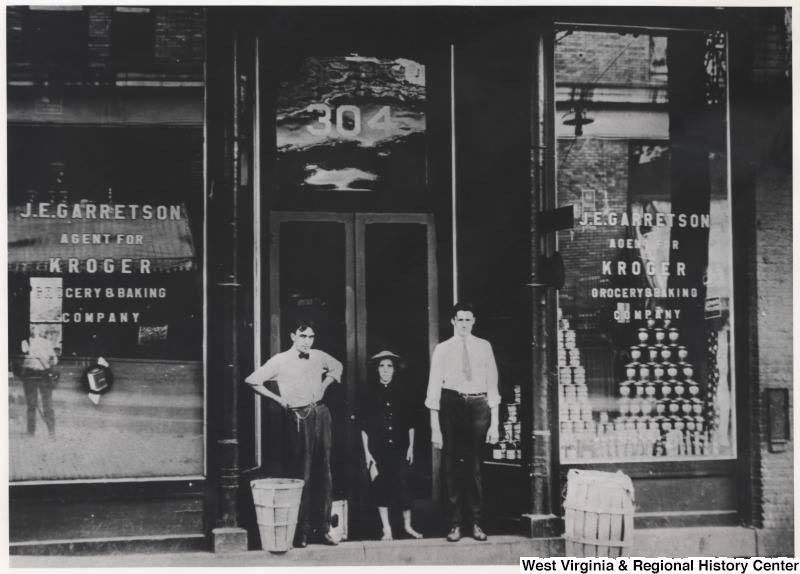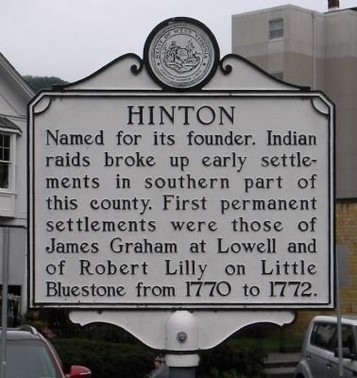Hinton West Virginia Historical Marker
Introduction
Text-to-speech Audio
Images
1910. First Kroger Grocery & Baking Co. Store in Hinton. Later to become Bowlings Dairy Bar. Located at 304 3rd Avenue, Early West Virginia and its History Facebook Page. https://www.facebook.com/media/set/?set=o.553348398056027&type=1

The historical marker is located on the lawn of the Summers County Courthouse.

Backstory and Context
Text-to-speech Audio
Hinton is a quaint, little railroad town located in Summers County, West Virginia. The town was incorporated by John Hinton on September 21st 1880 and is situated at the confluence of the New and Greenbrier Rivers. According to National Coal Heritage, the C & O connected the nation’s east coast with southern West Virginia, via the towns of White Sulphur Springs, Hinton, and the city of Huntington. As a result of the new railroad, small towns began to spring up to accommodate the needs of workers. Thus, the town of Hinton was formed.
The Chesapeake and Ohio was the first great railroad in southern West Virginia. Designed to link the Atlantic with the Midwest farmland via the New, Kanawha, and Teays valleys, it grew out of two older lines, the Virginia Central and the Covington and Ohio. The railroad led to mine openings on the New River at Quinnimont, Stone Cliff, Fire Creek, Sewell, Nutallburg, and Hawks Nest. By 1879 New River and upper Kanawha mines were shipping 365,523 tons of coal and 19, 748 tons of coke to factories in the east by rail. (Rice and Brown, West Virginia: A History, 185). As such, the popularity of the C & O Railway allowed Hinton to economically prosper.
In 1892 the C & O completed the construction of the Hinton roundhouse, which held 17 engine stalls and a car repair shop that held 40 cars. The roundhouse employed 370 men and the car shop 170 (Long, hintonwva.com). As an important commercial and transportation center, Hinton underwent construction in order to accommodate tourists and the new railroad workers. A hospital, bank, hotel, newsstand, and numerous retail stores lined the streets. Many of the buildings constructed resembled Victorian, American Gothic, and Greek Revival architecture. However, by the 1940s, the railroad changed from steam power to diesel power, and fewer workers were required to operate trains from the Hinton terminal. As Hinton’s population declined, the town’s bustling streets became less active and more sedentary.
Despite the town’s diminishing population, Hinton still retains its rich cultural history. Museums and antique shops line the streets with interesting tchotchkes inside their windows. The Hinton Railroad Museum features historic C & O memorabilia such as uniforms, tools, and model trains. The town celebrates its railroad history with the annual Railroad Days, a festival featuring train excursions, local artisans, and home-made food. Although Hinton is no longer a major terminal point on the railroad, the importance of railroading has undoubtedly left its mark on the once booming city.
Cite This Entry
Endicott, Katherine et. al. "Hinton West Virginia Historical Marker." Clio: Your Guide to History. December 12, 2017. Accessed April 13, 2025. https://theclio.com/tour/303/10

